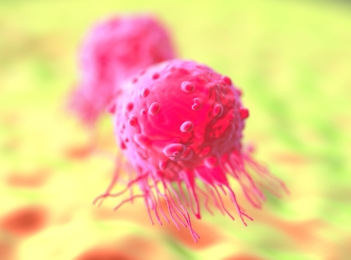19 February 2016
 Tiny new sensing transistors developed at UniSA’s Future Industries Institute with the support of the National Health and Medical Research Council are set to revolutionise surgical treatment for cancer patients.
Tiny new sensing transistors developed at UniSA’s Future Industries Institute with the support of the National Health and Medical Research Council are set to revolutionise surgical treatment for cancer patients.
Detecting the spread of cancer through the lymphatic system is one of the more difficult and critical areas of cancer diagnosis.
Current practice is that a surgeon operates to remove a primary tumour or search for tumours and lymph nodes and then take samples for pathological examination to see how far a cancer has spread.
In a collaborative project between UniSA and the Forschungszentrum Jülich GmbH in Germany, the research team has developed an ultrasensitive sensing technology for use during surgery, based on state-of-the-art, nanostructured silicon field-effect transistors, that promises to be a boon for doctors and patients.
UniSA Associate Professor Benjamin Thierry says the new technology provides superior detection of cancer cells hidden among healthy tissues and can be completed during an operation, reducing the need for further surgeries.
“Right now, when a cancer patient is undergoing treatment, a surgeon has to wait relatively lengthy lead times, often up to a few days, to get results of lymph node samples from the pathologists to get a measure of the spread of the cancer,” Prof Thierry says.
“This new technology has the potential to eliminate that lag time and to provide results within the time-frame of the surgery.
“Our research shows the accuracy and sensitivity of the silicon transistors is more advanced than anything being used today.
“In model studies, the technology proved so refined it could detect even one tumour cell per lymph node, making it as much as a thousand times more sensitive than the most advanced technology clinically available to date.
“Perhaps even more significantly for cancer patients and their doctors, is that the whole analysis could be completed within an hour.
“And using a streamlined protocol we can cut that to within 30 minutes and still provide the required sensitivity.”
Assoc Prof Thierry says the research, which was published this month in the leading journal ACS Nano, has the potential to revolutionise surgical treatments for breast cancer, head and neck cancer, and gastrointestinal cancer, all of which develop secondary cancers via the spread of tumour cells to the regional lymph nodes.
“In the future, our technology could be used more generally to distinguish malignant from benign tumors, thereby providing important answers to the surgeon during surgery,” he says.
“With this technology on board we could greatly reduce the need for secondary surgeries.
“We estimate that reliable intraoperative testing during surgery could spare up to 40 per cent of breast cancer patients a secondary surgery.
“Not only is the technology extremely reliable and efficient, it will also help to spare some of the trauma associated with cancer treatment, eliminating the need for multiple operations and giving doctors more confidence to make informed decisions during surgery.”
Read the full research report Towards Intraoperative Detection of Disseminated Tumour Cells in Lymph Nodes with Silicon Nanowire Field Effect Transistors, by Duy P. Tran, Marnie A. Winter, Bernhard Wolfrum, Regina Stockmann, Chih-Tsung Yang, Mohammad P. Moghaddam, Andreas Offenhäusser, and Benjamin Thierry.
Media contact: Michèle Nardelli office +61 883020966 mob 0418823673 email michele.nardelli@unisa.edu.au



